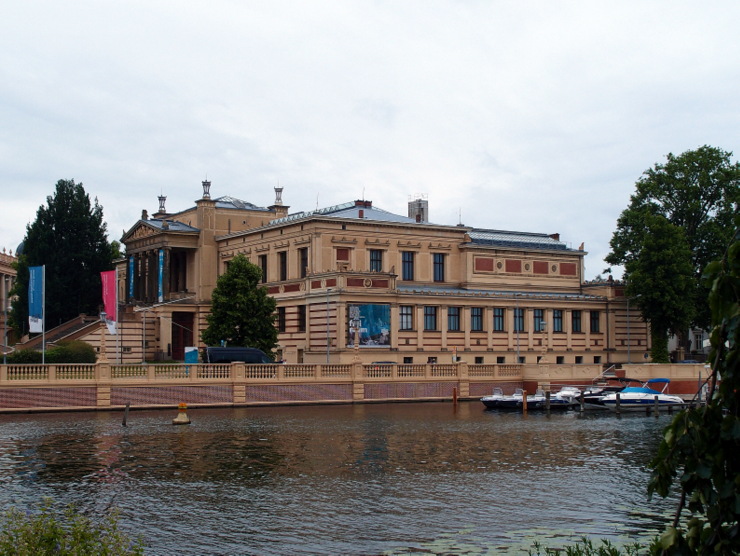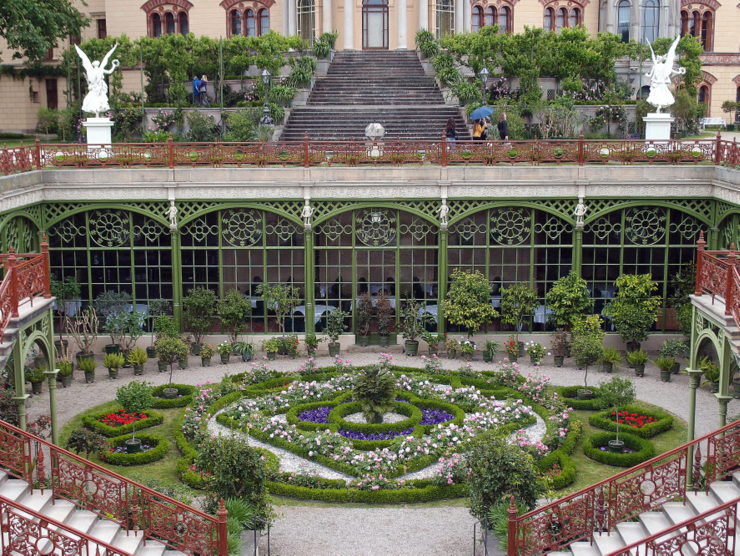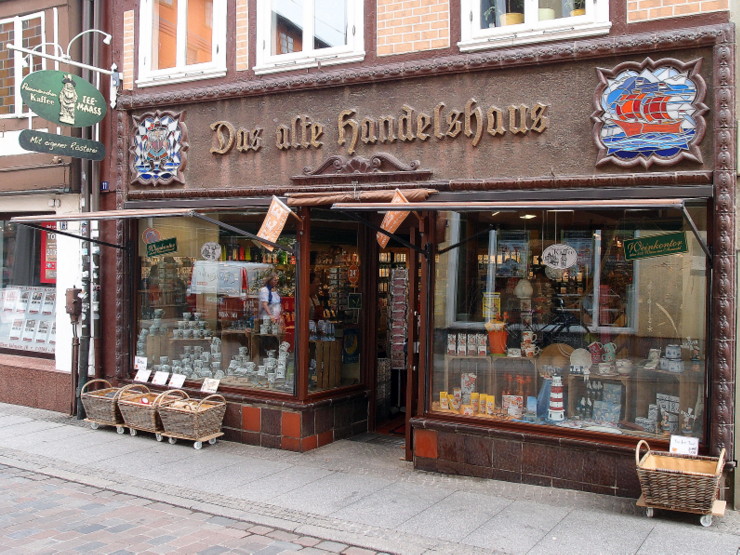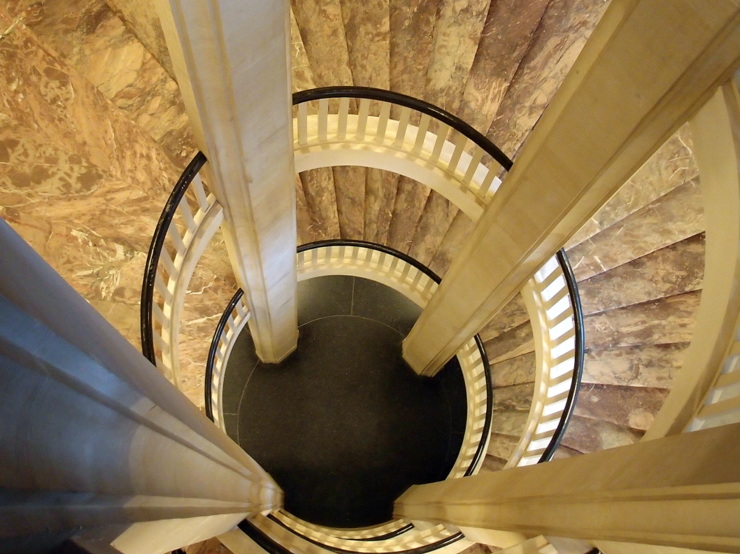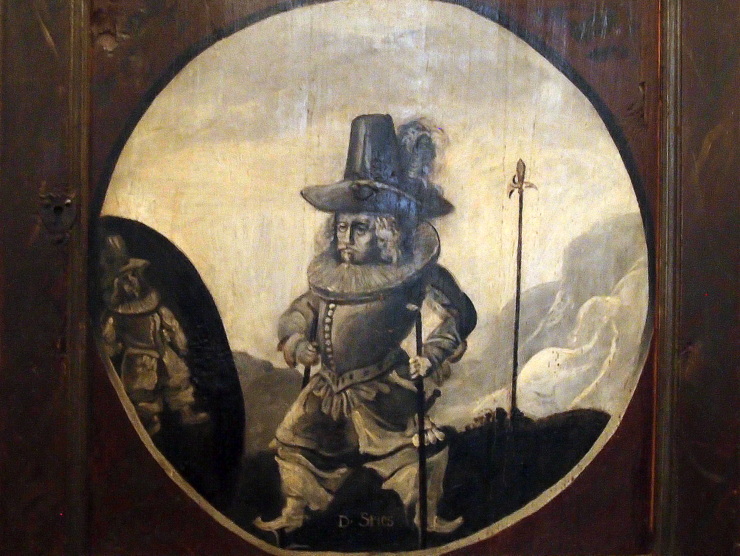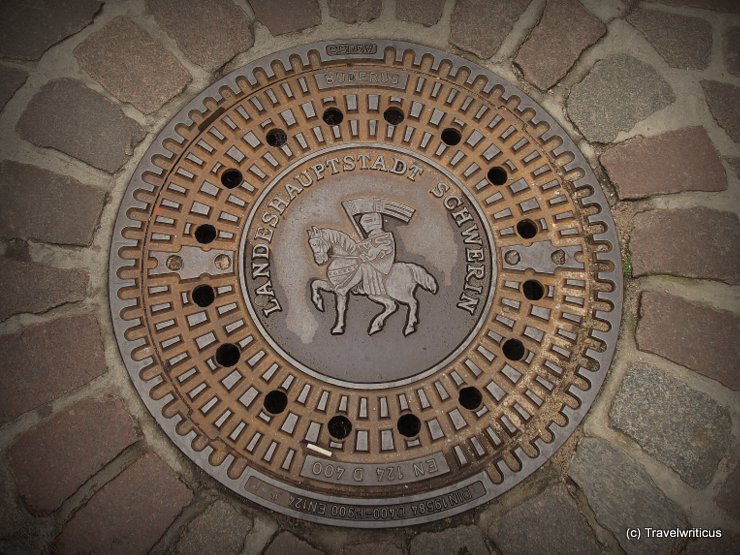
Schwerin is the capital city (Landeshauptstadt) of the German state of Mecklenburg-Vorpommern. The manhole covers in Schwerin show the city arms in the version of 1991. The depicted knight represents Henry the Lion. The flag in his hand is a gonfalon. [German]
